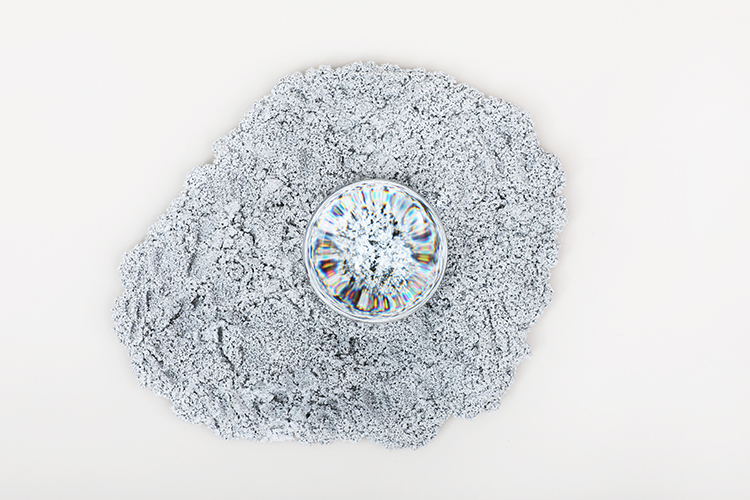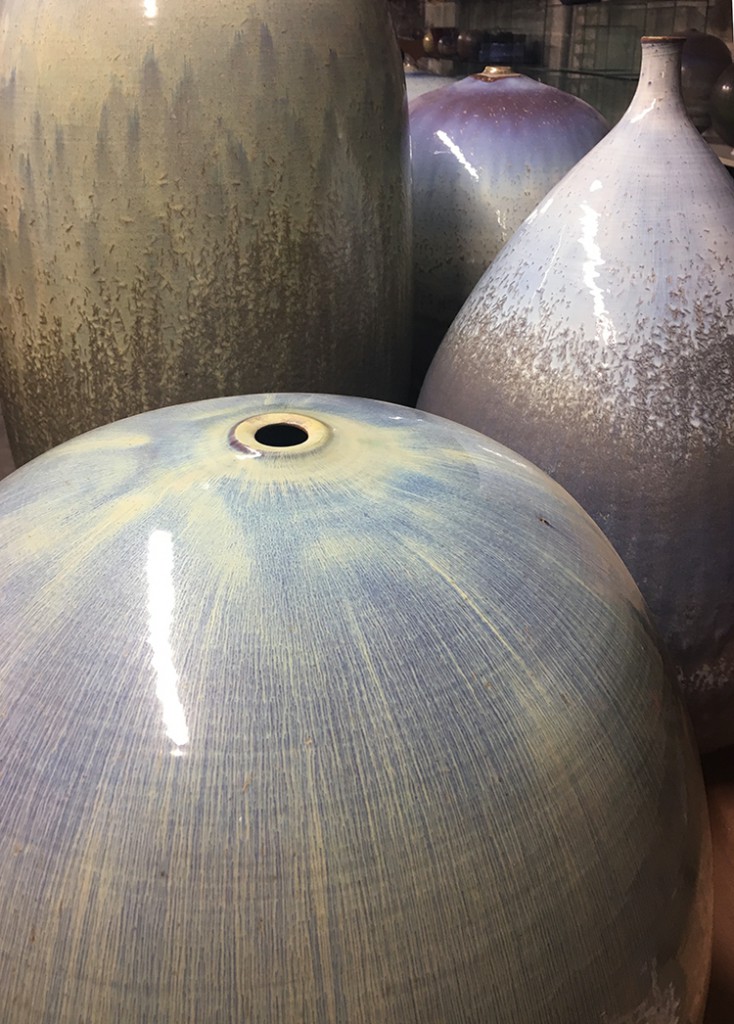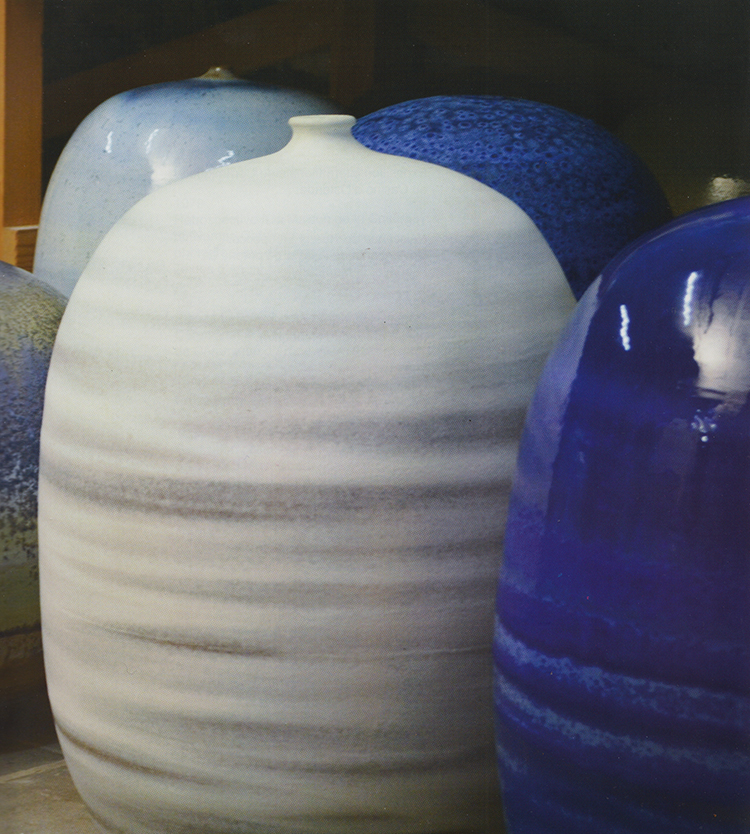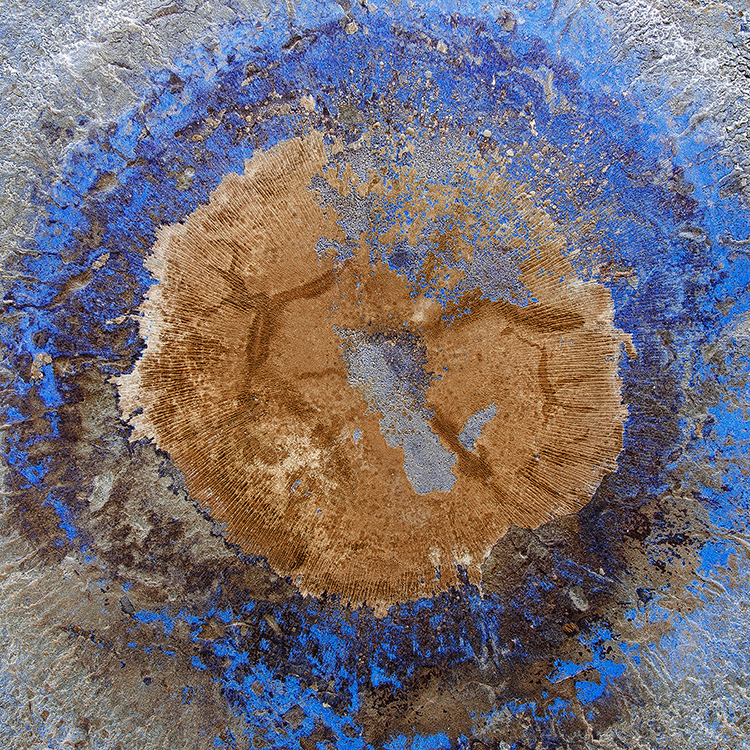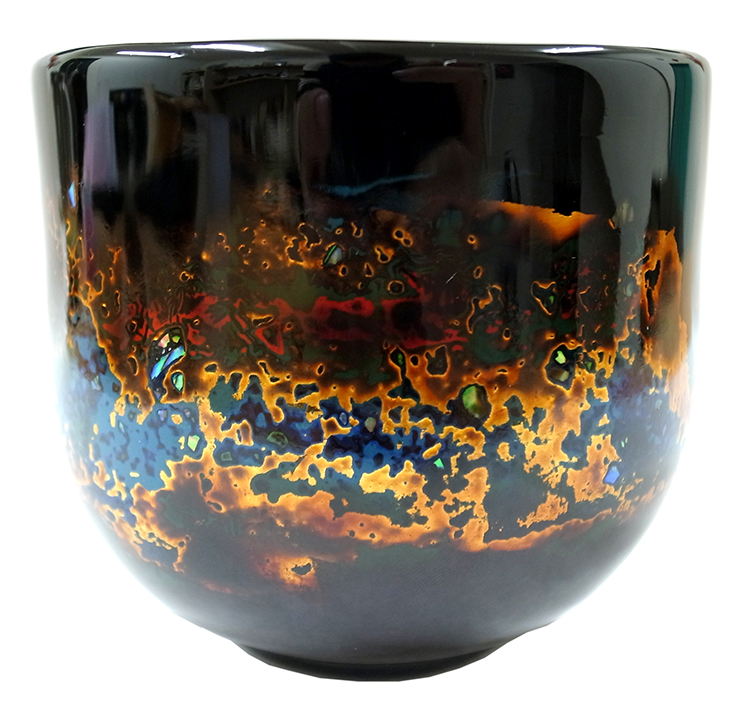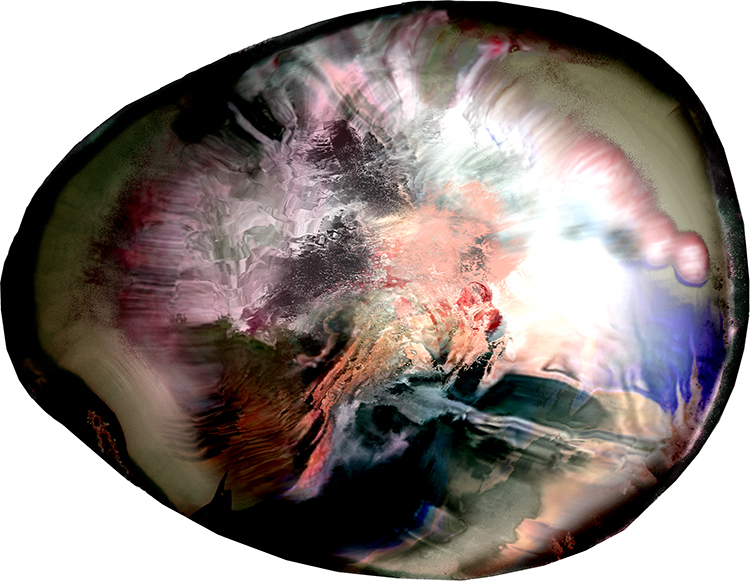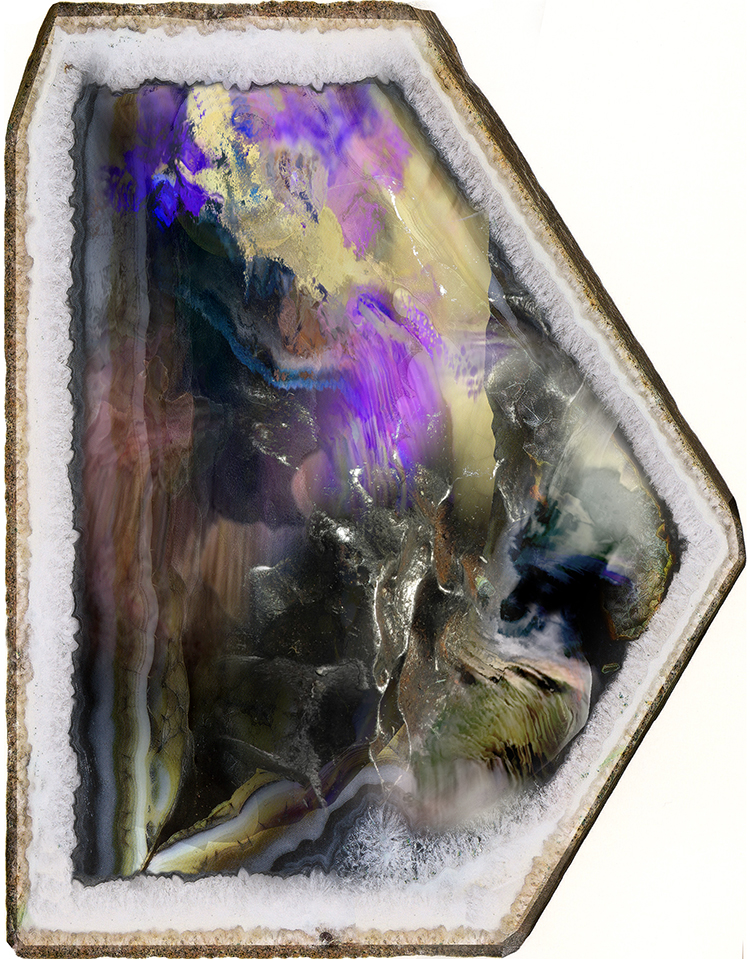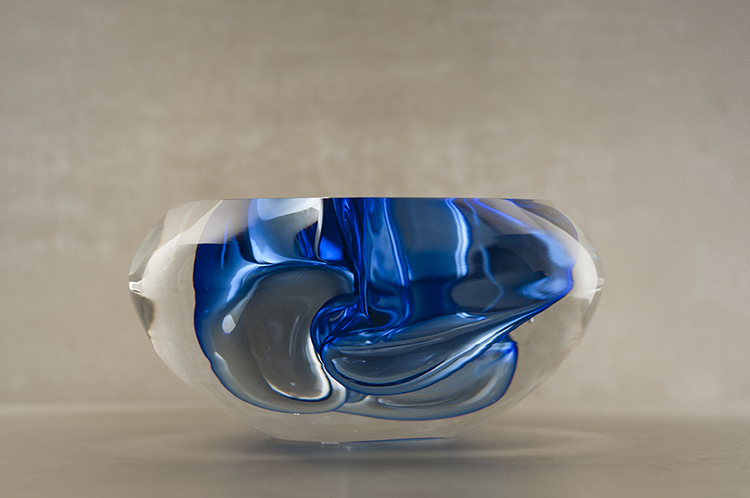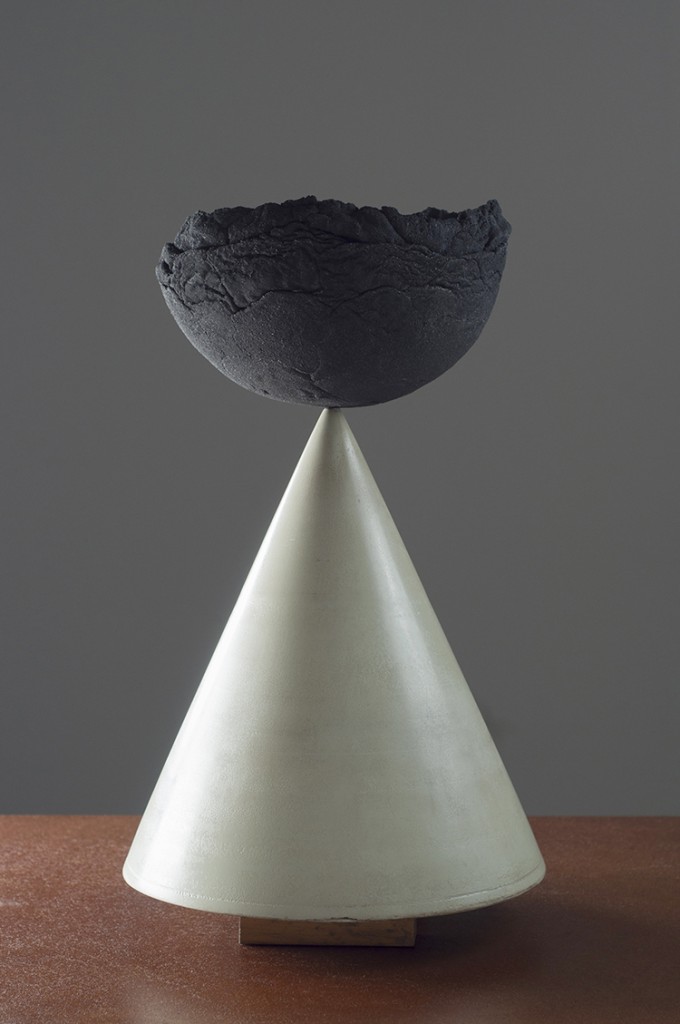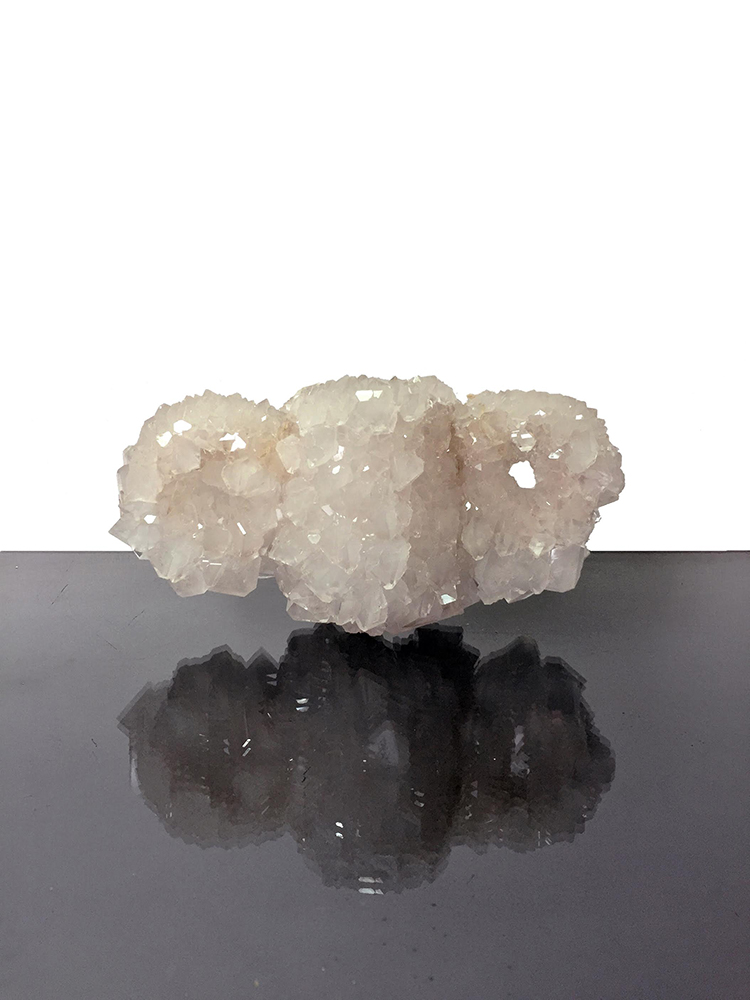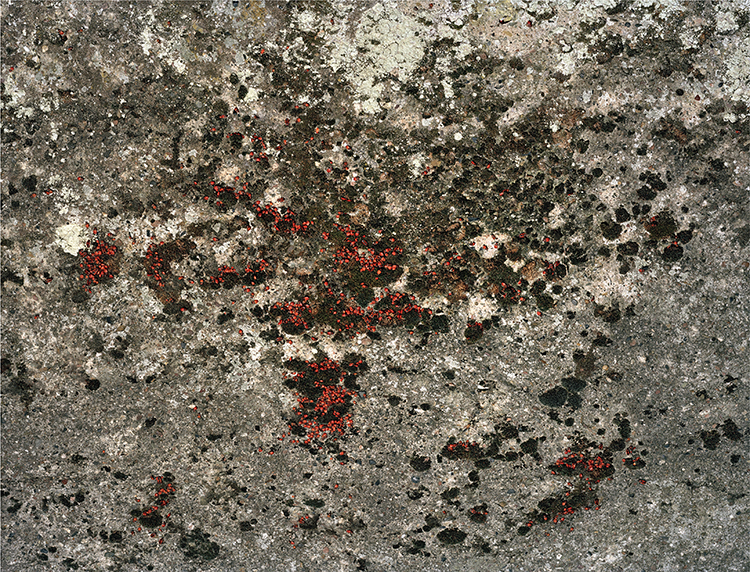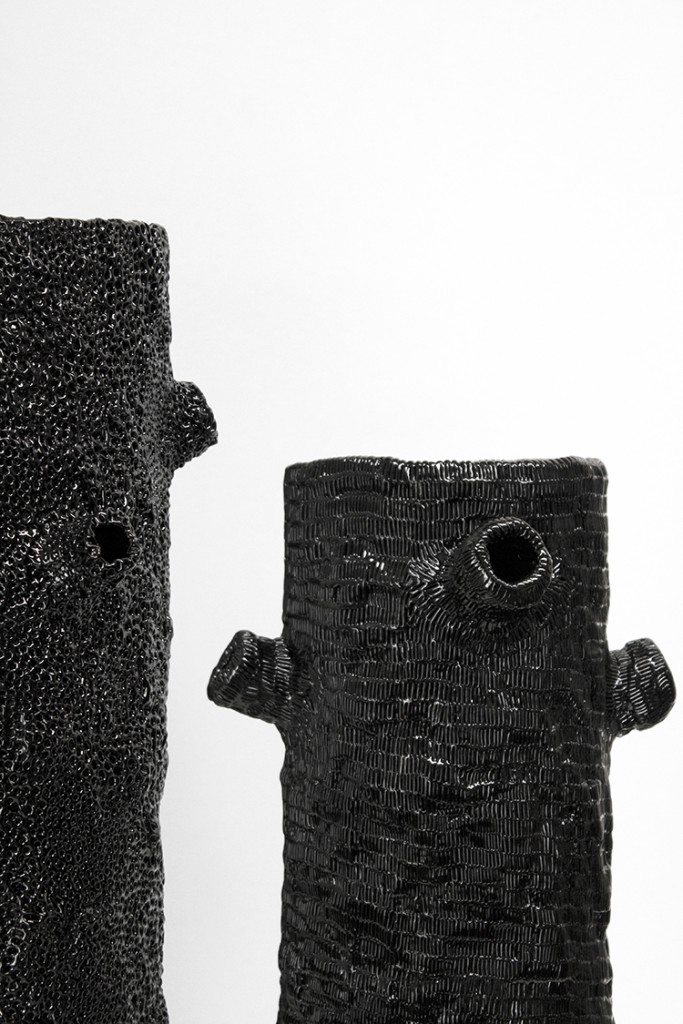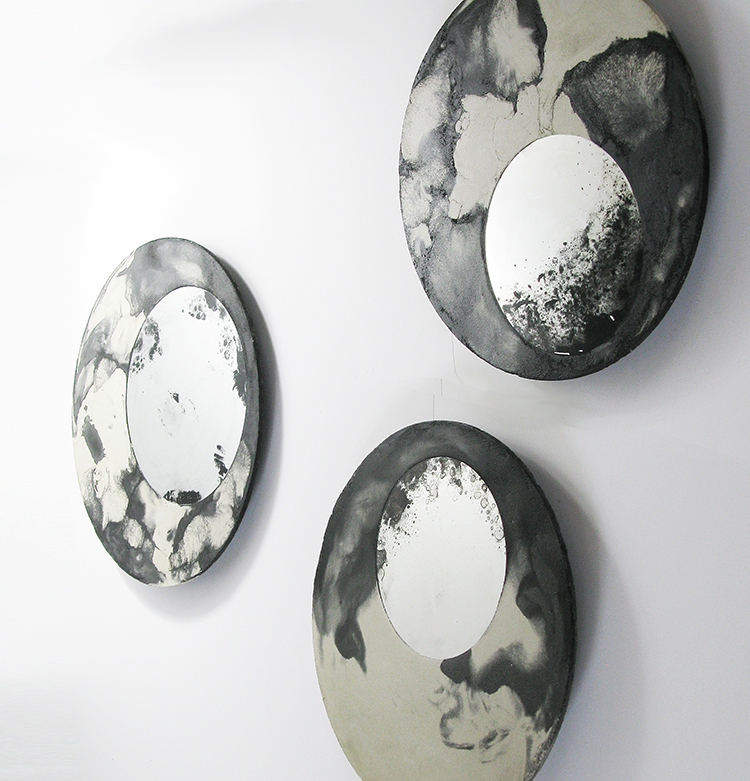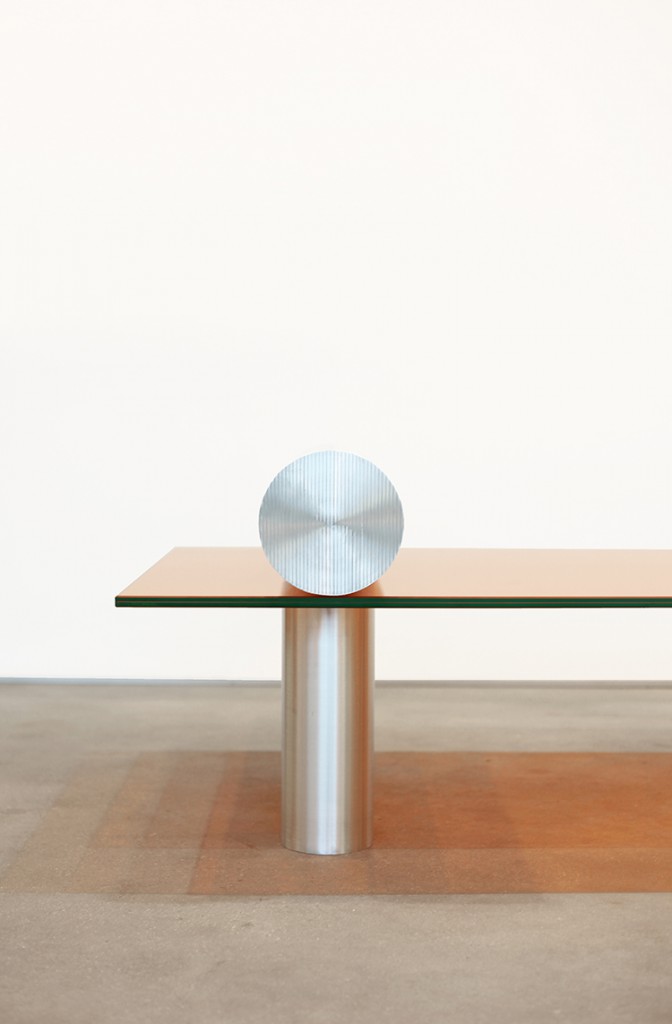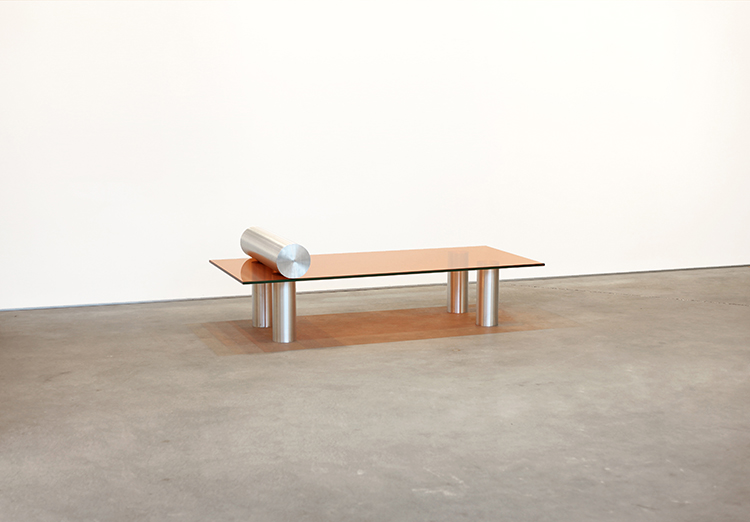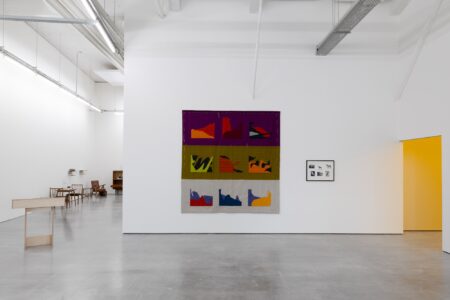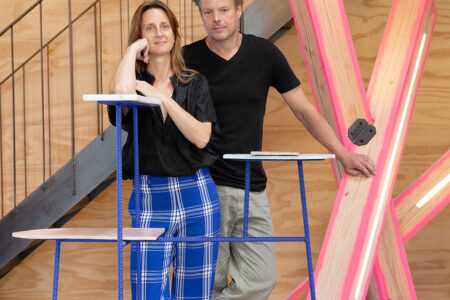Crystallized at Spazio Nobile
Opening on Wednesday February 22 is Crystallized, the fourth exhibition at Brussels gallery Spazio Nobile. TLmag speaks to curator Lise Coirier about the aesthetic significance of crystals in design.
“What I call crystallization is the operation of the mind that draws from all that presents itself in the discovery that the loved object has some new perfections,” wrote French romantic Stendhal in his 1822 philosophical novel, De L’Amour. The mental process of transforming a new love’s imperfections into glittering gems manifests as a form of design in Spazio Nobile’s new exhibition, running from February 22 to April 15.
Titled Crystallized, this is the fourth exhibition in the Brussels gallery for applied art, design and photography founded by Lise Coirier and Gian Giuseppe Simeone in April 2016. Both art historians, the couple have united their respective interests in spotlighting contemporary designers who infuse matter with form and life, on the one hand, with the preservation of cultural and artistic heritage and stimulation of public awareness, on the other hand. The exhibitions that emerge from this collaboration are distinctive in using a harmonious melange of contemporaneity and history to produce a dialogue across the artificial differences between creative disciplines. Coirier spoke to TLmag about the curatorial ideas behind Crystallized.
TLmag: What were the guiding ideas behind the curation of Crystallized?
Lise Coirier: For this first 2017 exhibition, we explored how material alchemy transforms one’s perception and elevates the status of an object or image beyond ornamentation. Across the three rooms of the gallery, the group show comprises 13 new contemporary installations that show novel ways to use noble materials like ceramics, crystal, lacquer, metal, mixed media, photography and natural minerals. Techniques include soft-glazed ceramics with crystalline compositions, free-blown crystal and crystallized minerals, multi-layered lacquer, infused dyed photographs on aluminium, solid aluminium combined to transparent flat glass, and more.
By combining nature with technology, the work reveals the beauty of experimentation. Topical contemporary processes such as recycling and upcycling are cast in a new light, as being timeless natural processes, even as a form of love. As Stendhal wrote in De L’Amour, while travelling with Mrs Gherardi to Salzburg’s salt mines: “What I call crystallization is the operation of the mind that draws from all that presents itself in the discovery that the loved object has some new perfections.”
The work appears simultaneously futuristic and primal. How are these historical ideas significant of contemporary design and society?
The works are metaphoric artefacts intended to start up a conversation, with our audience and potential collectors, about the reconciliation of the human being with a sense of natural flow. These are objects of our times that use an infinity of effects and combinations to combine natural and artificial materials, contrasting the individual human with the greater system of nature that marches on regardless of us. Handmade processes and the natural flow of time, nature and culture, craft and industry, the perfect and imperfect, permanence and impermanence, intellect and emotion, art and design are just some of the stimulating dualities that manifest
We can feel the love, the fragility of the Earth coupled to the human being and the quest for beauty, delight and acknowledgement, which in our case is a leitmotif through all of Spazio Nobile’s exhibitions. Like Stendhal recalls in his philosophical novel De L’Amour: “In the salt mines… through the effects of the waters saturated with salt which soak the bough and then let it dry as they recede, they will be covered with a shining deposit of crystals.”
How have these ideas of nature’s own craft process and a truly sustainable relationship between humans and Earth manifest in some of the work on display?
Antonio Lampecco, who is 84-years old, has learnt how to take advantage of working slowly, following his rhythm and the one of nature, especially when composing his crystalline soft glazed sandstone pieces. Throughout the decades, he has been close to nature, translating the green surroundings of the Abbey of Maredsous and his inner travels and memories from Italy into conceptually-driven ceramics. Through years of active experimentation, he has learnt how to shift from utilitarian shapes that evoke vases to closed forms as sculpture. When entering the space of Spazio Nobile, the impact of his colours, glaze, softness, and repetitive shapes, through such a long career of more than 60 years, manifests as an emotion rather than a concept.
The same kind of effect is provoked by the lacquer art works made with ostrich eggshell and bodiless lacquer by Ming-Zhong Chen, Yu-Ju Lin and Richu Lacquer Art Co. Eggshell is so delicate that it requires extra care while the bodiless lacquer looks heavy but is actually light and tough. This micro-universe suggests how our mind cherishes things. The younger generation of designers – including Philip Weber, Tom Joyce, Isaac Monté and Taeg Nishimoto – play both with the natural and the artificial. Nature appears both in the use of materials such as propolys, glass, clay and wool, but also in confrontation with coal, acrylic and oxides, entertaining a dialogue with Mother Nature’s craft.
Other participants include Chen Chen and Kai Williams, Marie Dessuant and Philip Bone of Dessuant Bone, and Gaëlle Gabillet and Stéphane Villard of GGSV. The Entropia series by the German photographer Frederik Vidal Entropia explores the magic of crystallized landscapes, and at the same time, revealing our fragility and ephemeral presence on Earth.
As Marlene Huissoud writes about her Of Insects and Men Vase and Wall installation: “I am interested in the greater discarded beauties that surround us and celebrate the cycles of material interactions, a rhythm in the process of making where industrial meets natural.”
Season IV – Crystallized at Spazio Nobile, Brussels (BE), 23.2.2017-15.4.2017, www.spazionobile.com
